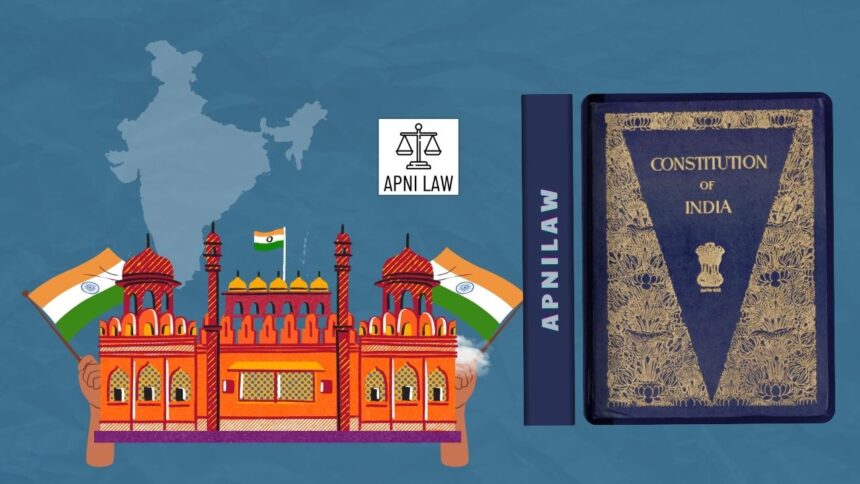Introduction
Judicial activism in India has become a defining feature of constitutional governance. It reflects the judiciary’s responsibility to protect rights, maintain constitutional limits, and ensure that the other organs of government act within the law. Indian courts have taken a proactive role in addressing injustice, expanding rights, and filling legislative or administrative gaps. This approach has shaped policies, influenced social reforms, and strengthened public trust in the judicial system. At the same time, it has sparked debates about judicial overreach and the balance of power. Understanding its meaning, merits, and criticisms explains why judicial activism remains both praised and contested.
What Is the Meaning of Judicial Activism in India?
Judicial activism refers to the judiciary’s dynamic and interventionist role in interpreting the Constitution and enforcing rights. It involves courts going beyond strict legal interpretations to address social issues, correct governmental failures, and uphold constitutional morality. Through judicial activism, courts strike down unconstitutional laws, review administrative decisions, and expand the meaning of rights to match evolving social needs.
The introduction of Public Interest Litigation (PIL) marked a turning point. Instead of waiting for affected individuals to approach the court, judges allowed socially conscious citizens, NGOs, and public-spirited individuals to raise issues affecting the poor or marginalized. This shifted the judiciary from a passive dispute-settling body to an active protector of justice. Judicial activism thus represents a rights-centered, people-focused approach that prioritizes justice over technicalities.
Why Did Judicial Activism Rise in India?
Judicial activism increased due to historical events, constitutional gaps, and the need to protect citizens when other institutions failed. After the Emergency period, when fundamental rights were weakened, the judiciary reasserted its authority to prevent future violations. The failure of administrative bodies to respond to corruption, environmental degradation, women’s safety, and public health also pushed courts to act.
The rise of PILs further encouraged judicial intervention. Issues like custodial torture, bonded labour, pollution, and workplace harassment reached courts through PIL petitions rather than traditional litigation. This expanded access to justice for groups who lacked money, education, or legal awareness. As public trust in the judiciary grew, courts became a platform to address inaction by the executive and legislature. Judicial activism thus evolved as a tool to uphold constitutional promises and protect public interest.
How Does Judicial Activism Protect Rights?
Judicial activism has strengthened rights by expanding their meaning and ensuring that fundamental freedoms are not compromised. Courts have played a key role in protecting women, children, minorities, LGBTQ+ communities, and other vulnerable groups. When laws were absent or inadequate, courts created guidelines or interpreted the Constitution in a progressive manner.
For example, the judiciary recognized protection against sexual harassment at workplaces as part of the right to equality and dignity long before a detailed statute existed. Courts also expanded the right to life to include clean air, safe working conditions, shelter, education, and a pollution-free environment. By giving rights a wider and more humane interpretation, judicial activism ensures that the Constitution remains a living document, capable of adapting to modern needs.
How Does Judicial Activism Strengthen Democracy?
Judicial activism strengthens democracy by holding the executive and legislature accountable. Courts ensure that power is not misused and that all decisions follow constitutional principles. When authorities act arbitrarily, courts intervene to restore fairness. When public offices fail to perform their duties, courts direct them to take action.
By reviewing laws, quashing unconstitutional decisions, and mandating transparency, judicial activism enhances checks and balances. It prevents concentration of power and promotes responsible governance. This role is crucial in a diverse democracy where government decisions affect millions of lives.
How Does Judicial Activism Promote Social Justice?
Judicial activism has driven major social reforms in India. Courts have intervened in issues such as environmental protection, road safety, child labour, bonded labour, tribal rights, and gender equality. Many landmark judgments led to new laws, better enforcement, and stronger awareness of human rights.
Environmental activism by courts has helped control pollution, regulate industrial activities, and preserve forests and rivers. Similarly, judicial interventions have strengthened consumer protection, improved prison conditions, and supported the welfare of people living in poverty. By focusing on equity and welfare, judicial activism promotes social justice and brings attention to issues often ignored by policymakers.
How Does Judicial Activism Improve Access to Justice?
Judicial activism improves access to justice through flexible procedures and citizen-friendly mechanisms. PILs allow anyone to approach the court on behalf of disadvantaged groups, making justice accessible without high costs or complex procedures. Judges have permitted petitions even on postcards and newspaper reports, ensuring that formalities do not prevent justice.
This approach ensures that justice reaches remote areas, oppressed communities, and individuals who otherwise cannot fight powerful institutions. By widening the doorway to the courts, judicial activism makes the justice system more inclusive, humane, and constitutional.
What Are the Criticisms of Judicial Activism in India?
Despite its many benefits, judicial activism faces serious criticism. The primary concern is that it disrupts the separation of powers. When courts make policy decisions, frame guidelines, or interfere with administrative functions, critics argue that the judiciary crosses its constitutional limits. This creates the risk of judicial overreach, where courts perform duties meant for the executive or legislature.
Another criticism is that activism may reflect personal opinions or ideological beliefs of judges, which could undermine impartiality. Courts are expected to interpret the law, not create it. When they pass sweeping directions on issues such as education, transport, or environmental management, they may unintentionally affect governance or cause administrative complications.
Judicial activism can also worsen delays in courts. When judges take up large-scale social issues, regular cases may slow down, increasing the burden on an already overloaded judiciary. Critics further warn that constant intervention may weaken democratic institutions by preventing them from functioning independently.
How Can Judicial Activism and Judicial Restraint Coexist?
A balanced approach is essential. Judicial activism is valuable when the government fails to protect rights or uphold constitutional duties. However, judges must also practice judicial restraint, respecting the roles of other organs. Courts should intervene only when constitutional values are threatened or when injustice becomes unavoidable.
The challenge is to maintain harmony between activism and restraint. A healthy democracy requires an active yet self-aware judiciary, one that protects rights without taking over governance.
Conclusion
Judicial activism has shaped India’s constitutional and social landscape. It has expanded rights, protected vulnerable groups, strengthened accountability, and promoted justice where other institutions failed. At the same time, it raises concerns about judicial overreach and the need to respect separation of powers. The future of judicial activism lies in maintaining the right balance, intervening when rights are at risk but avoiding unnecessary interference in governance. When used wisely, judicial activism becomes a powerful guardian of democracy, ensuring that the Constitution works for every citizen.







